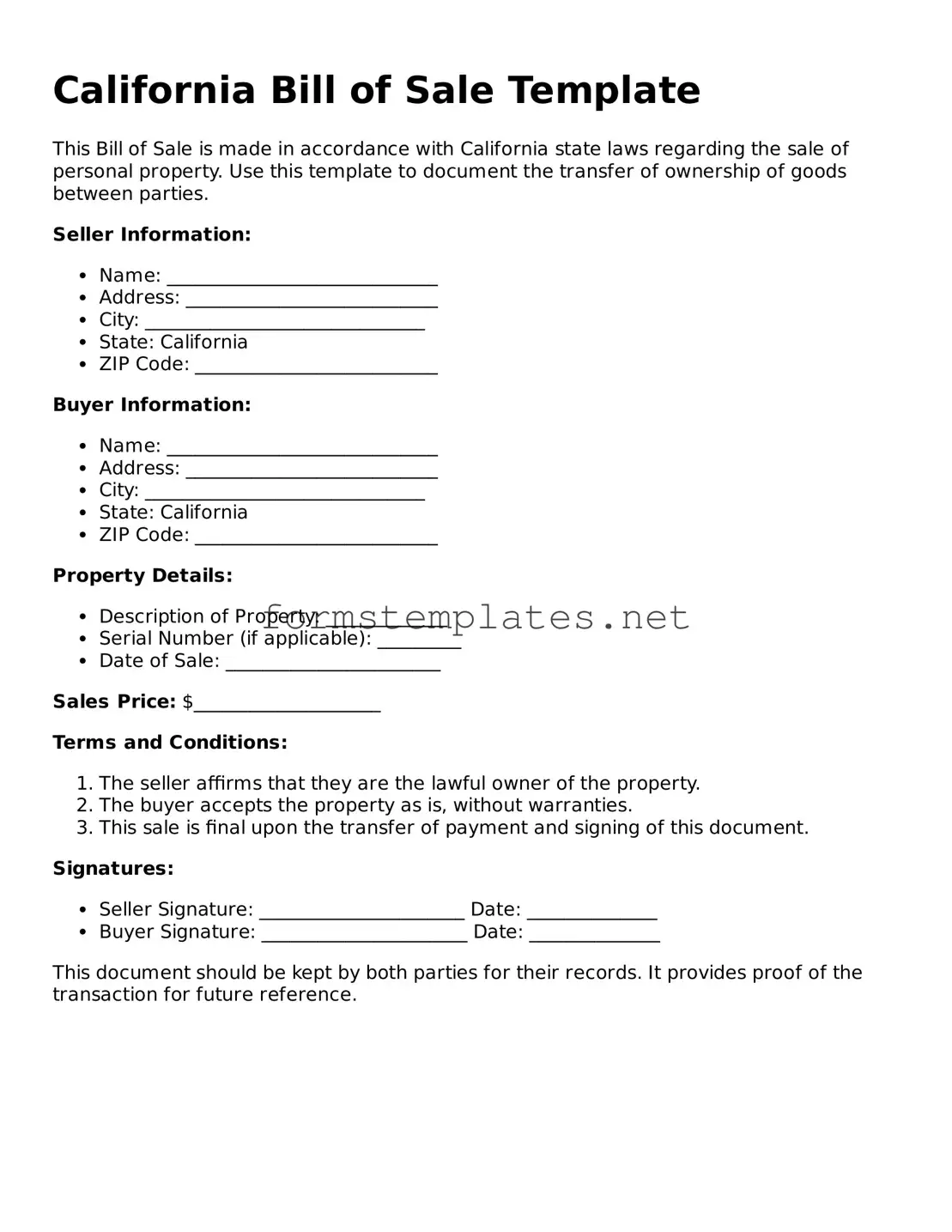What is a California Bill of Sale?
A California Bill of Sale is a legal document that serves as a receipt for the transfer of ownership of personal property from one person to another. It outlines the details of the transaction, including the buyer, seller, and description of the item being sold. This document can be particularly important for vehicles, boats, and other significant assets, providing proof of ownership and protecting both parties involved in the sale.
When do I need a Bill of Sale?
You should use a Bill of Sale whenever you are buying or selling personal property, especially items like vehicles, trailers, or boats. While it may not be legally required for smaller transactions, having a Bill of Sale can help clarify the terms of the sale and serve as a record for both the buyer and seller. It is also advisable to have one for transactions involving significant amounts of money or valuable items.
A comprehensive Bill of Sale should include the following information:
-
The names and addresses of both the buyer and seller.
-
A detailed description of the item being sold, including make, model, year, and identification numbers if applicable.
-
The sale price and payment method.
-
The date of the transaction.
-
Any warranties or guarantees provided by the seller.
Including this information helps ensure clarity and can prevent disputes later on.
Is a Bill of Sale required to register a vehicle in California?
Yes, a Bill of Sale is typically required when registering a vehicle in California. The California Department of Motor Vehicles (DMV) often requires this document as proof of ownership. It is essential to complete the Bill of Sale accurately, as it will be used to verify the transfer of ownership when you apply for a new title and registration.
Can I create my own Bill of Sale?
Absolutely! You can create your own Bill of Sale. Many templates are available online, or you can draft one from scratch. Just ensure that it includes all the necessary details mentioned earlier. While you do not need a lawyer to create a Bill of Sale, having one reviewed by a legal professional can provide additional peace of mind.
What happens if I lose my Bill of Sale?
If you lose your Bill of Sale, it may complicate matters, especially if you need to prove ownership. However, you can often create a new Bill of Sale to replace the lost document. If you are the seller, you might ask the buyer to sign a new one. Keeping multiple copies of important documents is a good practice to avoid such situations in the future.
